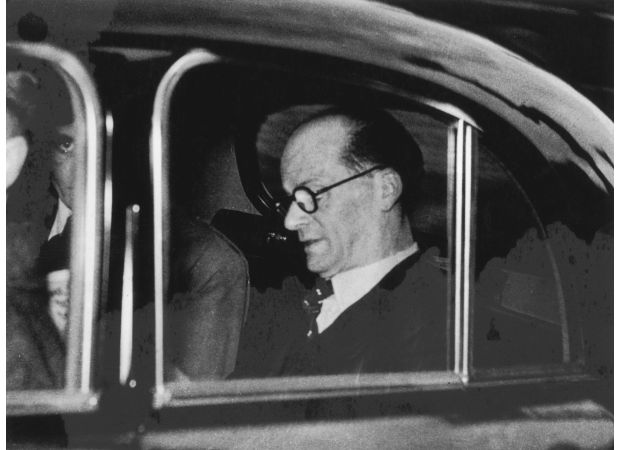Recent evidence confirms that an innocent man was wrongfully executed for the Rillington Place murders.
Kate Summerscale revisits the dark story of John Reginald Halliday Christie in her popular new book.

In the early hours of March 25, 1953, the streets of Notting Hill were buzzing with the news of a horrific discovery at 10 Rillington Place. The bodies of three women had been found concealed within the walls of one of the old, rundown Victorian terraces. Another was found buried under the floorboards. The community was shocked and horrified, and one man in particular was already familiar with the grim reality of what had been uncovered.
Harry Proctor, a renowned crime reporter, had arrived on the scene after receiving a tip-off about the gruesome find. As he chatted with the police outside the house, memories from three years prior flooded back to him. He had visited this very same house and interviewed a man who was now the prime suspect in these heinous crimes – John Reginald Halliday Christie.
Proctor had been tasked with speaking to Christie after another tenant, Timothy Evans, was accused and convicted of murdering his wife and infant daughter. He had also encountered Christie during Evans's trial at the Old Bailey, where Christie's testimony had been crucial in sending Evans to the gallows. At the time, Proctor, like many others, believed it to be a simple domestic tragedy. But now, with the discovery of more bodies, disturbing questions were raised. Was there a serial killer living at 10 Rillington Place? And had an innocent man been framed for murder?
This chilling tale of the Christie murders has been retold countless times in books, documentaries, and dramas over the past 70 years. But bestselling true crime author Kate Summerscale has uncovered new evidence that suggests a different solution to this infamous case. In her latest book, The Peepshow: The Murders at 10 Rillington Place, she delves into the shocking details of the murders and explores the motivations behind such heinous crimes.
In an interview with Metro, Summerscale explains how this case has become somewhat of a legend in her mind. When she first began researching it, she couldn't even recall the killer's name. But as she dug deeper, she realized the significance of the story, especially in light of recent crimes against women. She was intrigued by the specific targeting of women by certain men, such as Christie, whose crimes had haunted the 1950s and beyond.
The narrative of The Peepshow centers around Proctor, determined to prove Christie's guilt, and Fryn Tennyson Jesse, eager to restore her reputation by covering the case for a prestigious series of books. Summerscale chose to focus on these two individuals in order to provide a closer look at the investigation as it unfolded. She also notes the voyeuristic nature of true crime writing, a nod to Christie's own voyeuristic tendencies.
Christie himself was described as almost invisible, with a perfect disguise of shabby, middle-aged Englishman. This allowed him to evade capture for a period of time, as hundreds of people reported sightings of him all over the country. The fact that he appeared so ordinary made his crimes all the more terrifying. As Summerscale puts it, he was "the man of a thousand doubles." It's a reminder that sometimes, the most heinous acts can be committed by the most seemingly ordinary individuals.
It was a late evening on March 24, 1953 when star crime reporter Harry Procter arrived at 10 Rillington Place. The street was lined with dingy Victorian terraces, and inside one of them, the police had made a shocking discovery. Three women's bodies were found sealed up in a wall, and another was hidden under the floorboards. As Proctor chatted with one of the officers guarding the door, memories from three years ago flooded his mind. He had visited this very same house and interviewed the man who the police were now hunting - John Reginald Halliday Christie.
Proctor had been sent to speak with Christie after another tenant, Timothy Evans, was accused of murdering his wife Beryl and baby daughter Geraldine. At the time, Proctor had thought it was just another tragic domestic incident. But now, with the discovery of more bodies, he couldn't help but wonder if there was a serial killer at work inside 10 Rillington Place. And even more troubling, did he unknowingly help send an innocent man to the gallows?
The story of the Christie murders has been told and retold for over 70 years, captivating readers and viewers through books, documentaries, and dramas. And now, bestselling true crime author Kate Summerscale revisits the case once again with new evidence that may shed light on one of the UK's most notorious crimes. In her book, "The Peepshow: The Murders at 10 Rillington Place", Summerscale explores the chilling details of the case that has become almost like a myth or fable in her mind.
In an interview with Metro, Summerscale explains her fascination with the case, saying it was a story that stuck with her even though she couldn't even remember the killer's name at first. She was intrigued by the idea of a man deliberately targeting and murdering women, and how this theme continues to play out in present-day crimes such as the Sarah Everard abduction and murder. Christie was an extreme example of this, and his crimes haunted not only the 1950s, but also the decades that followed.
Summerscale's book focuses on two key figures in the investigation - Harry Proctor, the chief reporter for the Sunday Pictorial, and Fryn Tennyson Jesse, a writer for the prestigious Notable British Trials series. Both were determined to understand Christie and his heinous crimes, and to uncover the truth about his involvement in the murder of Beryl and Geraldine Evans. Through Proctor and Jesse, Summerscale aims to bring readers closer to the investigation as it unfolds.
She explains that the title of her book, "The Peepshow", is a nod to Christie's voyeuristic tendencies. He was known for taking pornographic photos of women and spying on his neighbors, and Proctor and Jesse were similarly curious about him, driven by their need to understand the man behind the murders. Summerscale acknowledges that writing about true crime can also be seen as participating in this voyeuristic culture, but her intention is to shed light on the case and its complexities.
In the book, Summerscale describes how Christie was able to blend in with society, with Jesse noting how he had "complete protective colouring" in his neat but shabby clothes. He was the image of an ordinary Englishman, earning him the nickname "the man of a thousand doubles". When the police launched a manhunt for him, there were countless reported sightings from all over the country. This added to the fear and paranoia of the time, as anyone could potentially be Christie. It was a terrifying thought that someone who appeared so normal and unassuming was capable of such heinous acts of violence and deceit.






